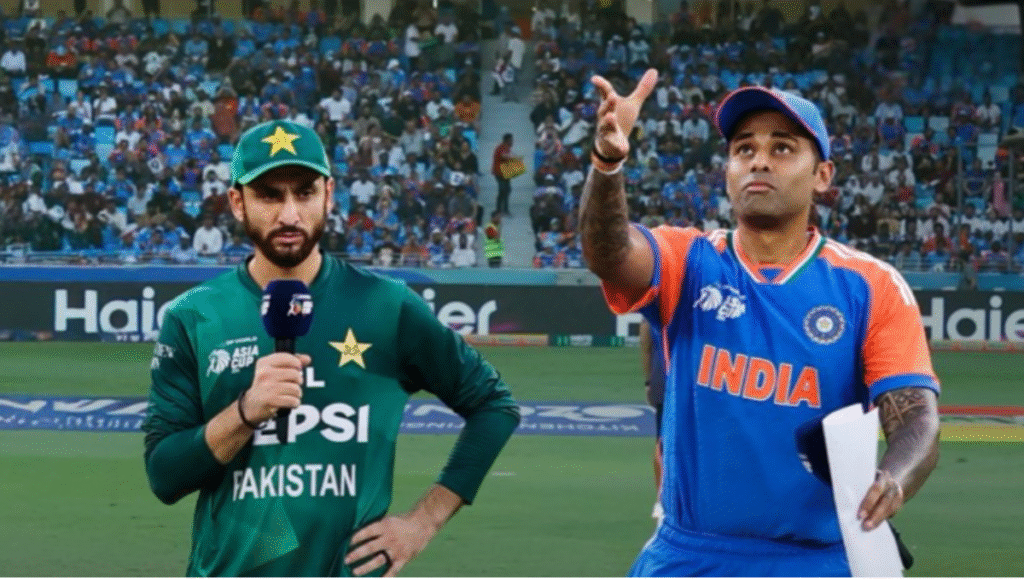
The Weight of Words: Covering the Asia Cup 2025 Sports Journalism in the Asia Cup 2025 India-Pakistan Final
There is something uniquely electrifying about an India-Pakistan cricket match. The atmosphere is charged, emotions run high, and every ball, every run, carries significance far beyond the boundary line. In 2025, as the Asia Cup reaches its climax, the India-Pakistan final in Dubai is not just another match; it is a moment that brings together history, politics, culture, and raw passion. For sports journalists covering this high-stakes encounter, the responsibility is immense.
Being a journalist in such moments is not just about reporting scores or player statistics. It is about holding a delicate balance—delivering the story accurately, swiftly, and with sensitivity. With millions of eyes watching, and social media amplifying every gesture, statement, and meme, one wrong word can escalate tensions. The duty of objectivity has never been more critical. The journalist must rise above personal biases and external pressures to focus on the facts, presenting them with clarity without adding unnecessary drama.
Dubai, the host city, is a cauldron of anticipation. Security is heightened, and the tension is palpable. Yet, journalists cannot let fear dictate their coverage. In past tournaments, such as the 1999 World Cup during the Kargil conflict or the 2003 matches against the backdrop of geopolitical challenges, the media’s role was to inform without inflaming. Today, with social media acting as both a platform and a magnifier, every tweet or post can have immediate global repercussions. Here, accuracy is as important as speed. Reporting unverified information can compromise not only the journalist’s credibility but also public sentiment.
Balanced storytelling is another cornerstone of responsible sports journalism. Both India and Pakistan face immense pressure, and while emotions run high, every statement and action must be contextualized. If players or officials make provocative gestures or remarks, the journalist’s job is to document what happened, explain its significance, and, where possible, provide official responses. Sensationalizing incidents may generate clicks, but it risks inflaming passions and misrepresenting the spirit of the game.
Accuracy under pressure is not optional; it is a professional obligation. From verifying team news and player fitness to reporting security updates, journalists must ensure every detail is correct. Fake news spreads rapidly, and in the charged environment of an India-Pakistan match, misinformation can have consequences far beyond the pitch. A journalist’s credibility rests on the ability to verify, contextualize, and communicate effectively, even when deadlines loom and tensions rise.
While political undertones and off-field drama are unavoidable, the heart of sports journalism lies in the game itself. Celebrating stellar performances, analyzing tactics, and capturing the excitement of each run or wicket is the ultimate responsibility. Even when external provocations arise—like in a previous encounter when intoxicated fans attempted to provoke players—the journalist must stay focused, reporting events with professionalism and composure. In such moments, journalists become custodians of truth and credibility. Their words can either calm a situation or exacerbate tensions. Choosing the former is the hallmark of true sports journalism.
The Asia Cup 2025 India-Pakistan final is a reminder that sports are more than just entertainment; they are a cultural phenomenon that can unite or divide. For journalists on the ground, the challenge is to navigate this landscape with integrity, ensuring that the narrative remains grounded in facts and the celebration of the sport. Emotions will be high, and stories will be scrutinized, but the journalist’s role is to provide a lens of clarity through which the audience can experience the game without distortion.
Ultimately, covering such a match is about responsibility. It is about telling the story of cricket while respecting the context that surrounds it, highlighting the skill and spirit of the players, and acknowledging the intensity of the moment. In a world where a single post can go viral within minutes, measured, accurate, and sensitive reporting is not just a professional standard—it is a duty to the sport, the players, and the millions of fans watching around the world.
Disclaimer: This article is based on publicly available information and aims to provide an informative perspective on sports journalism. All opinions are those of the author and intended for educational and editorial purposes.





